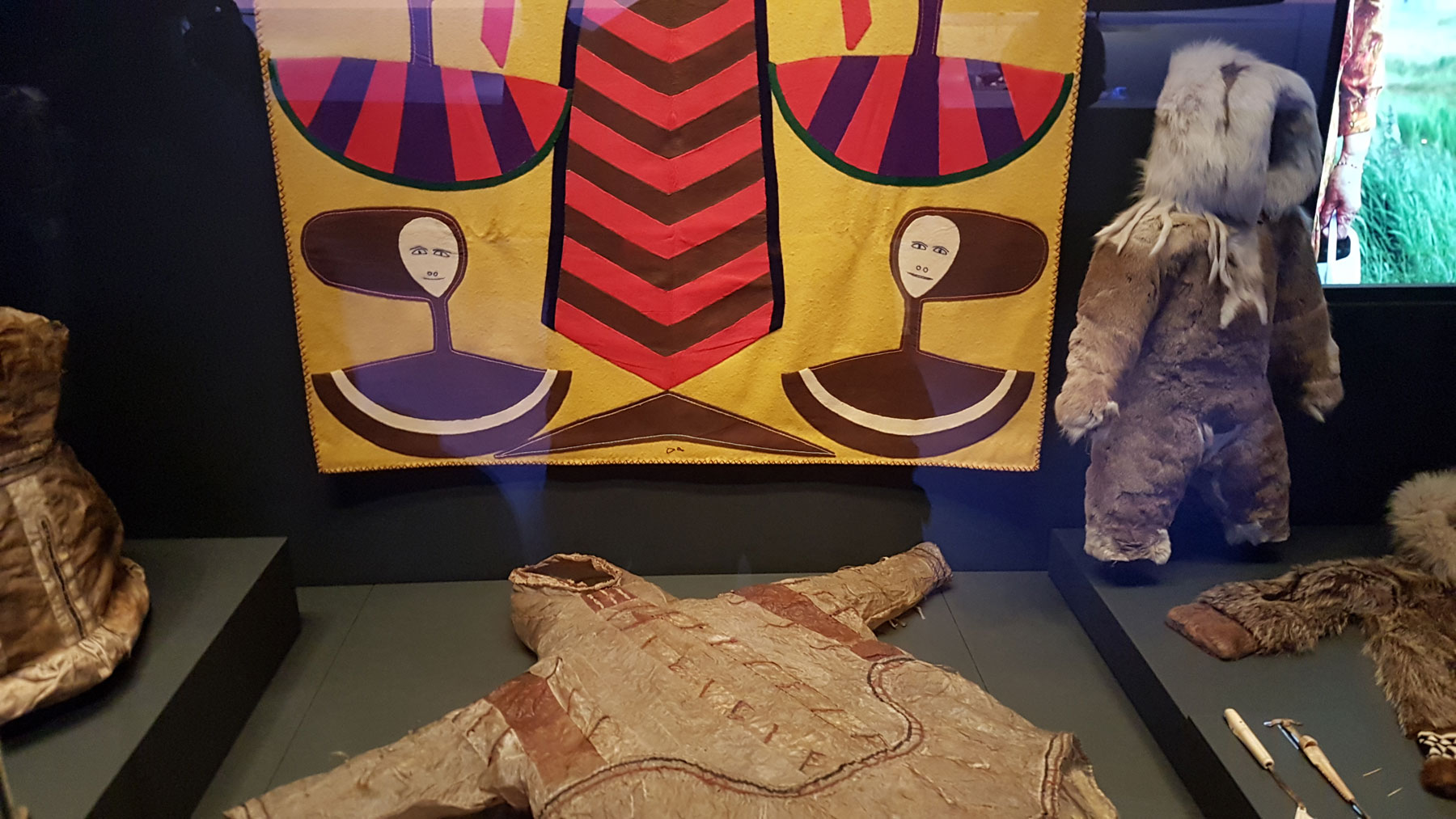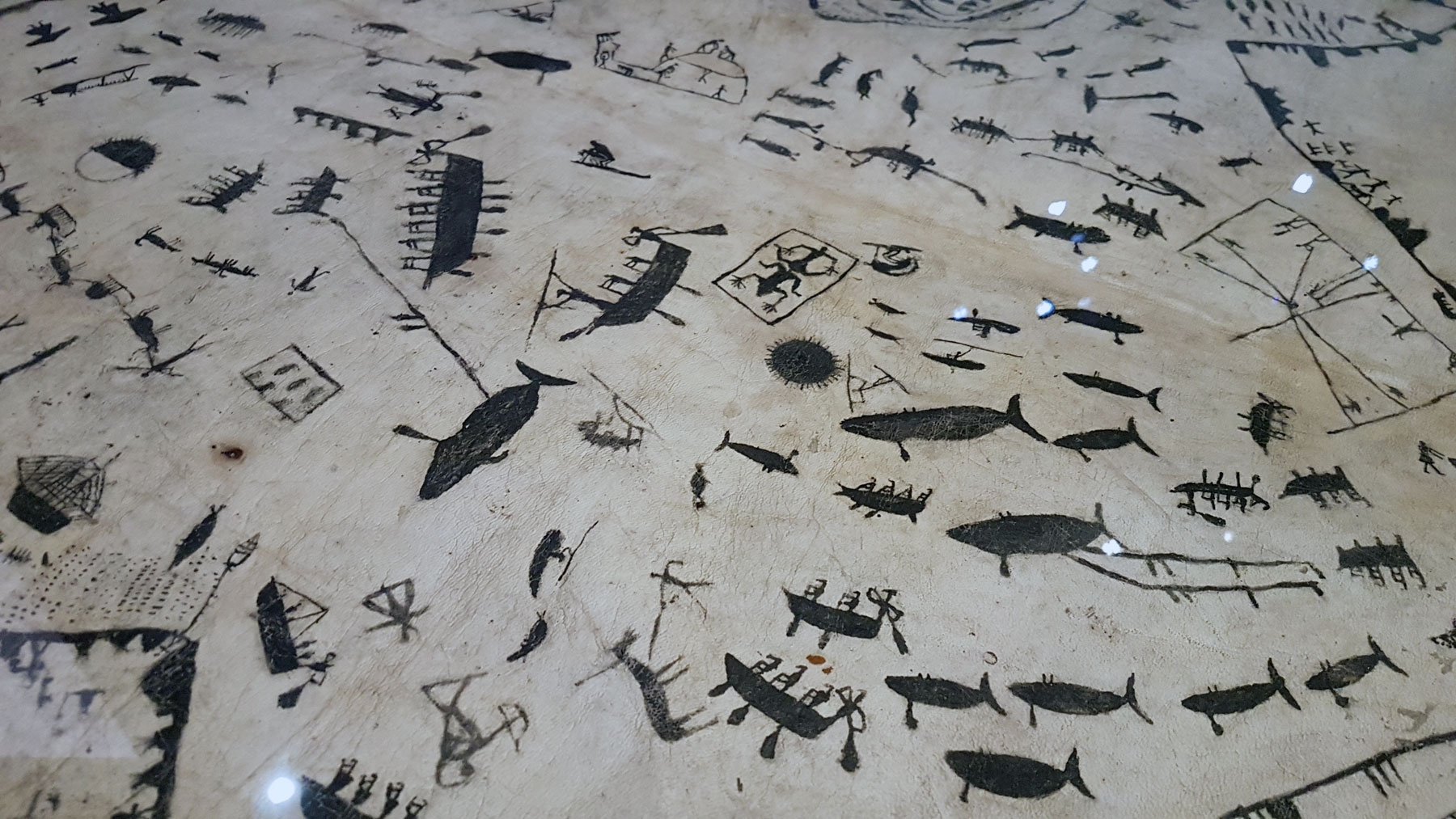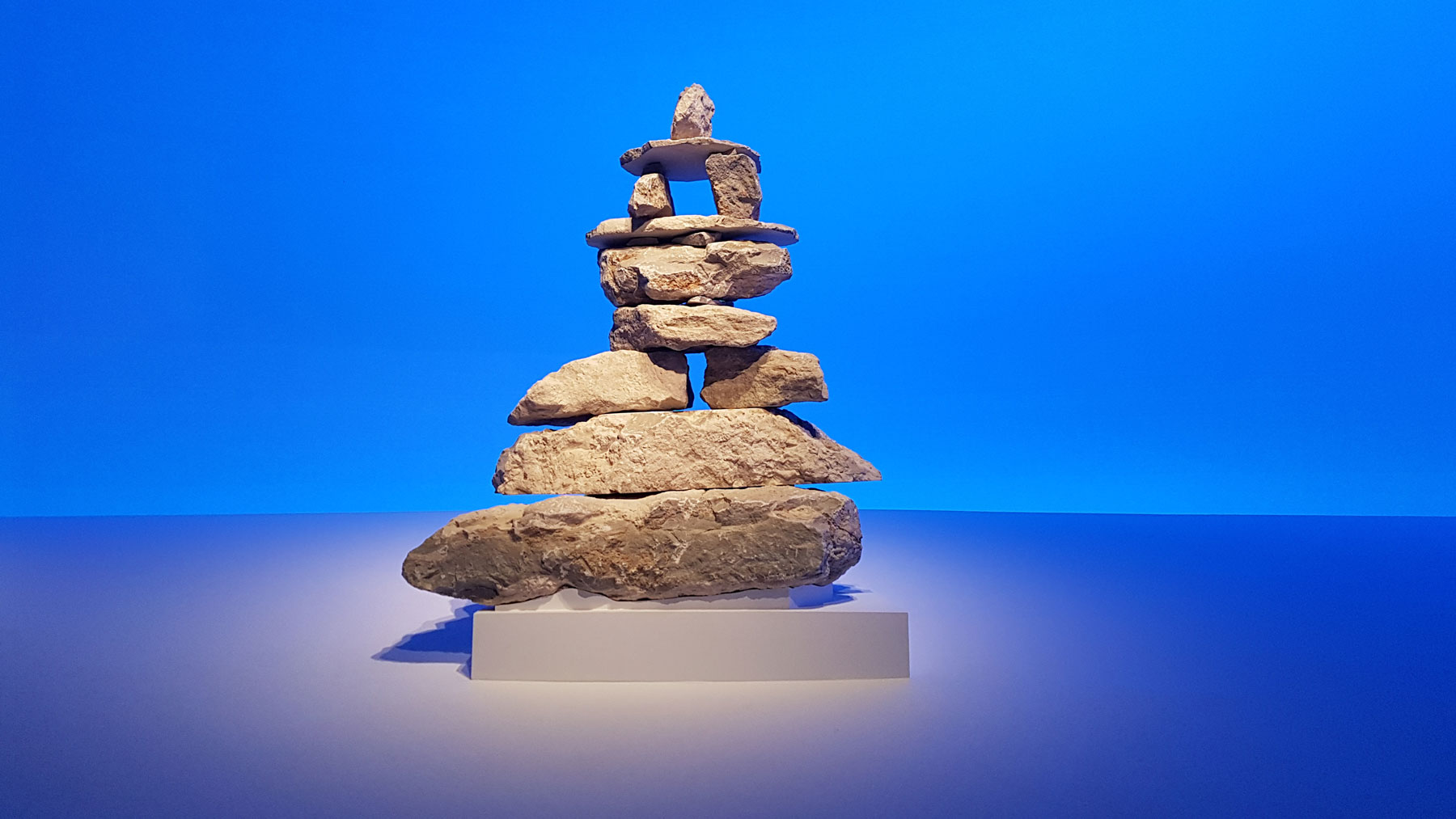An exhibition about the Arctic that opens with a warning that the lands you are about to visit are rapidly vanishing might sound like it’s going to be a bit of a downer, but this exhibition is really quite uplifting.
Most of us are probably familiar with the Arctic through wildlife documentaries, but maybe less familiar with the humans who share the landscape. It’s that void that this new exhibition at the British Museum seeks to fill.
The Arctic is not a defined continent, but a ring of lands occupied by around 4 million people, with around 40 ethnic groups spread across the ring that surrounds the arctic ocean. If you think it’s all whale blubber, sledges and furs, you’re in for a surprise.
Opening with richly decorated and colourful outfits next to the classic dull skin and furs, this is a reminder that the cultures are exceptionally varied.
It’s a curious mix on display, sometimes dull browns and furs, bleached bones and ivory, sometimes colourful and brightly decorated. The skills of the seamstresses are shown to be highly prized with their ability to stitch animal skins in a way that makes that proof against the difficult climate.
Some of the items on display look almost African, others classically American Indian, and all around the realities of life in a land not known for its arable lands.
In an ecosystem of ice, there’s no tradition of agriculture, and part of the exhibition may be a bit worrying for animal lovers. But also this is a culture that uses everything after hunting. A dead animal is food, weapons, clothing, tents, tools. Nothing is wasted, and everything has a purpose.
Displays jump from showing bleached ivory and bone that’s been carved into tools or intricate models, then leaps into full technicolour with brightly decorated fabrics and clothing. Scary face masks used in religious dances mix in with the practicalities of family life, birth and death.
It’s also a lifestyle that’s at risk from climate change – less the collapsing ice sheet in the middle of the ocean than the disappearing ice along shorelines, protecting them from erosion. Animals that the residents depend on are moving away or dying out when their own hunting grounds vanish, leaving the arctic dwellers facing a climate crisis.
It’s not the first time their culture has been affected by humans elsewhere.
It was the arrival of southerners some 200 years ago that changed life forever, and much as happened elsewhere in the world, colonial attitudes shattered cultures that had existed for centuries.
It’s how the arctic residents adapted to the interloper that can surprise. The mechanical sledge didn’t replace the dog hauled one because it was better, but because it was faster — so that parents could visit children forcibly removed to distant schools.
In recent years, awareness of the great crime committed is more widespread and attempts made to undo the damage.
What comes out though from this look into a culture most of us are unfamiliar with is a people who are proud of their life and their heritage and one that while aware of what’s going on with the climate have a strong belief that they can deal with whatever it throws at them.
It’s an exhibition to visit because it’s informative and exciting and not going to leave you feeling depressed about the future.
The one thing you won’t see here, are igloos.
The exhibition, Arctic culture and climate is open until 21st February.
Entry is £18 for adults – free for children and members – and tickets need to be booked in advance.














